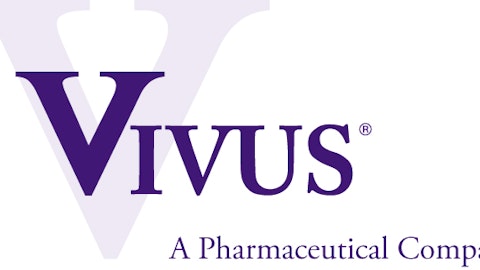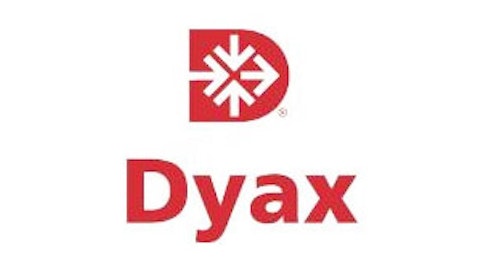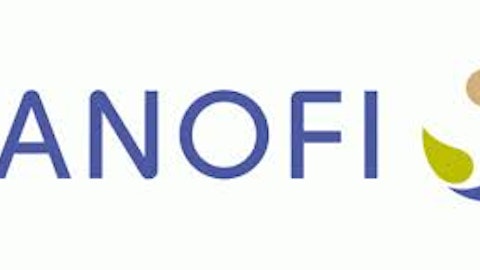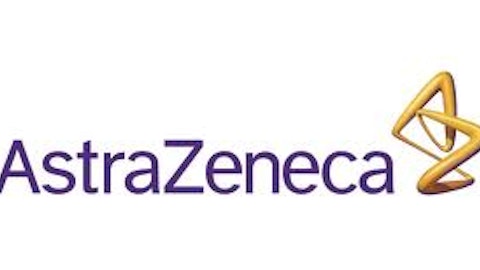The prescription-drug market currently generates a whopping $950 billion in annual sales, and that figure is likely to grow to $1.2 trillion by 2016. Despite having hundreds, even thousands, of biotechnology companies spread throughout the world conducting what amounts to nearly 148,000 ongoing studies according to the National Institutes of Health, only one in every 5,000 to 10,000 research molecules actually becomes a marketable drug.

Source: Erich Ferdinand, Flickr.
Developing a drug is an arduous process, often lasting a decade or longer, and the effective cost of developing a drug, including the failures of other pipeline candidates, can sometimes top $1 billion. Consumers often complain about drug prices when they finally make it to pharmacy shelves, but pharmaceutical companies merely see it as a means to recoup their time, effort, and money spent in developing new therapies.
Sometimes, drug developers walk the fine line of pricing a drug very poorly. A perfect example is metastatic prostate cancer drug developer Dendreon Corporation (NASDAQ:DNDN), which priced its cellular immunotherapy treatment known as Provenge at a whopping $93,000 annually. By comparison, advanced prostate cancer treatments offered by Johnson & Johnson (NYSE:JNJ) and Medivation Inc (NASDAQ:MDVN) are both less expensive. Because of its premium price tag, few insurers covered the treatment, leaving physicians with too many reimbursement question marks to prescribe it to patients.
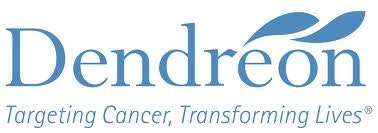
Soliris
Developed by Alexion Pharmaceuticals, Inc. (NASDAQ:ALXN), Soliris is the most expensive drug in the world, at an average annual cost of $409,500. Soliris itself treats a rare blood disorder called paroxysmal nocturnal hemoglobinuria, in which patients’ red blood cells break down faster than they’re supposed to. The reason is a missing gene known as PIG-A, whose function is to allow proteins to stick to red blood cells and protect them from substances in the blood that would otherwise cause them to break down. Without this protein present, anemia and other serious complications can develop. There are only about 8,000 known cases of PNH in the United States.
Soliris added another indication in 2011 to treat atypical hemolytic uremic syndrome, or aHUS, a rare and life-threatening genetic disease that can adversely affect the kidneys, heart, and brain. It’s estimated there are only 300 known cases in the United States.
Elaprase
Elaprase, which is made by Shire PLC (ADR) (NASDAQ:SHPG), runs at a bargain-basement annual cost of “just” $375,000 when compared to Soliris. Elaprase is designed to improve walking function in patients with Hunter Syndrome, a disorder whereby an enzyme the body needs to break down complex molecules is missing or not functioning properly. Without this enzyme present or working properly, these molecules can build up in the brain and other tissues, causing permanent damage. There are an estimated 2,000 known cases worldwide.
Naglazyme
Coming in third with an annual cost of $365,000 is BioMarin Pharmaceutical Inc. (NASDAQ:BMRN)‘s Naglazyme. This drug is an enzyme replacement therapy for patients with mucopolysaccharidosis VI, also thankfully abbreviated for us as MPS VI. The disease afflicts approximately 1,100 people worldwide and is characterized by an enlargement of tissues and organs that can result in inflammation and permanent scarring.
Cinryze
Acquired by ViroPharma Inc (NASDAQ:VPHM) when it purchased Lev Pharmaceuticals in 2008, Cinryze slides in as the fourth-most expensive annual drug, costing insurers and patients $350,000. Cinryze was developed to treat a condition known as hereditary angioedema, a rare genetic disorder characterized by recurrent bouts of severe swelling that can affect the face, limbs, abdomen, and airway. There are about 6,000 cases of HAE in the United States.
Myozyme
Not to be forgotten as the fifth-most expensive drug in the world is Sanofi SA (ADR) (NYSE:SNY) and BioMarin’s Myozyme, which can be yours for the low, low price of $300,000 per year. Myozyme is designed to treat Pompe disease, a disorder characterized by a mutation to the GAA enzyme that subsequently allows glycogen to build up in the body — specifically affecting the heart and skeletal muscles. There are only 900 known cases of Pompe disease around the globe.
Just because it’s an orphan drug doesn’t mean it’ll be a success
Although many of these orphan drug manufacturers have had few problems getting insurance companies to reimburse their treatment, these companies aren’t without risks.
Alexion Pharmaceuticals, Inc. (NASDAQ:ALXN) is a great example of a company that’s outperformed its sector, but it has one inherent flaw — its overreliance on Soliris. Despite gaining an additional indication in aHUS and growing at an exceptional rate, a quick review of all clinical trials that are ongoing and have been completed will reveal Alexion’s love for Soliris. In total, 44 of its 45 clinical trials involve Soliris. We’ve seen what can happen when one company relies on just one drug to power its entire pipeline, and it’s certainly a risk investors need to understand before making the dive into Alexion.
BioMarin is another rare-disease drug developer that investors should keep their discerning eye on. While it’s true the company has had success in developing rare-disease drugs, it hasn’t had any success in translating that hard work into a bottom-line profit for shareholders, even with the high price of Naglazyme and Myozyme. The unfortunate aspect of focusing on rare diseases can sometimes be that a very limited patient pool makes it difficult to become profitable. It could be years before BioMarin is running in the black, yet it’s already sporting a market value closing in on $8 billion.
Choose wisely
Ideally, when looking for an orphan drug developer, we want a nice balance of profitability and pipeline diversity. There are plenty of intriguing candidates out there, but on this list none shines more brightly than Viropharma Inc (NASDAQ:VPHM), whose Cinryze sales grew by 44% last quarter. ViroPharma also appears to be on the cusp of reviving maribavir from the dead by retesting the anti-cytomegalovirus drug at higher doses than it did nearly five years ago.
My suggestion to you would be to keep your eye on Viropharma Inc (NASDAQ:VPHM) moving forward and to not let drug prices sway your decision to shy away from, or buy, a biotech stock.
The article The 5 Most Expensive Drugs in the World originally appeared on Fool.com.
Fool contributor Sean Williams has no material interest in any companies mentioned in this article. You can follow him on CAPS under the screen name TMFUltraLong, track every pick he makes under the screen name TrackUltraLong, and check him out on Twitter, where he goes by the handle @TMFUltraLong.The Motley Fool owns shares of, and recommends, Johnson & Johnson. It also owns shares of Dendreon and recommends BioMarin Pharmaceutical.
Copyright © 1995 – 2013 The Motley Fool, LLC. All rights reserved. The Motley Fool has a disclosure policy.
